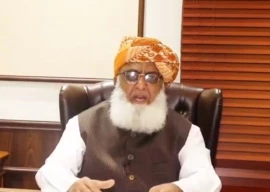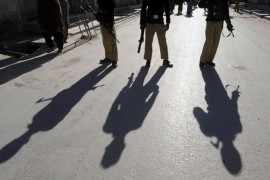The salvo of hand grenades and gunshots echoed in the newsroom. It seemed like a huge part of the Express Media Group’s office building had collapsed. A sea of employees rushed outside via the emergency exit. But the heavy firing forced everyone back inside. “Not again” was what everyone was thinking.
This was the second attack on the media group. It was December 2, 2013. Four more attacks took place thereafter, including the brutal assault on its anchor Raza Rumi. “I was told my name was on a Taliban hit-list, but I hoped this was just a tactic to scare journalists […] how wrong was I,” he told Amnesty International (AI) in their latest report on the attacks on journalists in Pakistan.
The report, titled ‘A bullet has been chosen for you: Attacks on journalists in Pakistan’, is being released today (Wednesday). It starts with Rumi’s ordeal that left him injured, his guard paralysed and his driver dead. Then it goes on to reveal a shocking figure: 34 journalists may have been killed as a direct consequence of their work since the democratically elected government was restored in March 2008.
The report describes how the Pakistani authorities have almost completely failed to stem human rights abuses against media workers or to bring those responsible to account. The violence is not limited to killings - many more journalists have escaped assassination attempts or been threatened, harassed, abducted or tortured.
The methodology used to determine the gravity of the abuse is extensive field research, documenting and analysing over 70 cases along with interviews with over 100 media workers in Pakistan. From urban areas, AI received complaints of harassment and attacks by the agencies, which have recently come under fire after the assassination attempt on Hamid Mir. From Karachi, the report highlights accusations at ethnic and religious groups. Moreover, it also allots a section to the difficulties and ill-treatment of foreign correspondents, including the case of New York Times journalist Declan Walsh.
Meanwhile, the threat by the militant groups, including the Tehreek-e-Taliban Pakistan, spreads from Karachi to Khyber-Pakhtunkhwa and the tribal areas. In those conflict-ridden regions as well as Balochistan, these groups and ethnic Baloch armed groups openly threaten reporters with death and attack them.
But the bottom line is ‘nothing is being done’. “The government has promised to improve the dire situation for journalists, including by establishing a public prosecutor tasked with investigating attacks against journalists. But few concrete steps have been taken,” said David Griffiths, AI’s Deputy Asia-Pacific Director.
“The range of threats means that journalists are placed in an impossible position, where virtually every story could put them at risk of reprisal from several sides. It also has a chilling effect on freedom of expression and is increasingly leading to self-censorship,” Griffiths told The Express Tribune.
“In practice, this means that it is much more difficult for journalists to hold leaders to account or report on human rights issues. They’re simply pressured or threatened into covering stories from a certain angle.”
Published in The Express Tribune, April 30th, 2014.
COMMENTS (4)
Comments are moderated and generally will be posted if they are on-topic and not abusive.
For more information, please see our Comments FAQ
1731907834-0/Jonathan-Majors-and-Meagan-Good-(2)1731907834-0-405x300.webp)
1731906859-0/Jonathan-Majors-and-Meagan-Good-(1)1731906859-0-165x106.webp)

1724657897-0/Untitled-design-(2)1724657897-0-165x106.webp)



1728020241-0/Express-Tribune-Web-(12)1728020241-0-270x192.webp)









A great timely piece by a fantastic human being.
Govt. fails to protect everyone.
and Journalist's failed to protect Government! This part is missing
More armymen, policemen, lawyers and religious scholars have been killed than journalists "in response to their work" but Amnesty International is silent on them. Pakistan is under attack from terrorism and innocent people from all walks of lives are getting killed. It's wrong to single out one community while ignoring the rest.